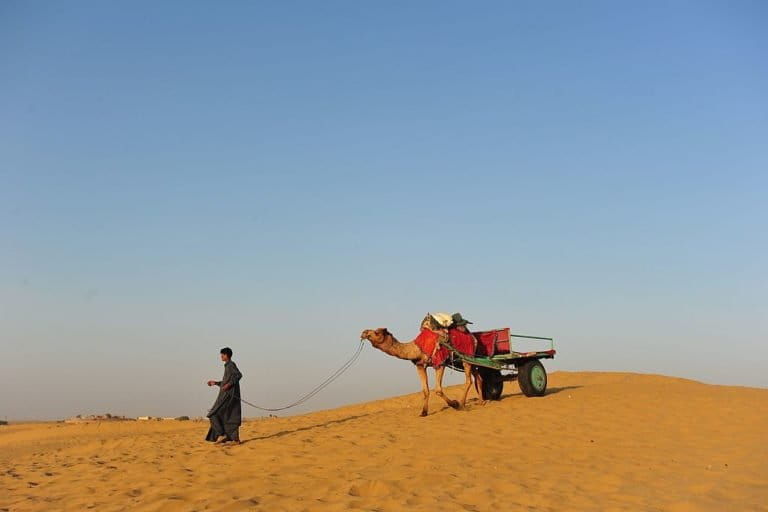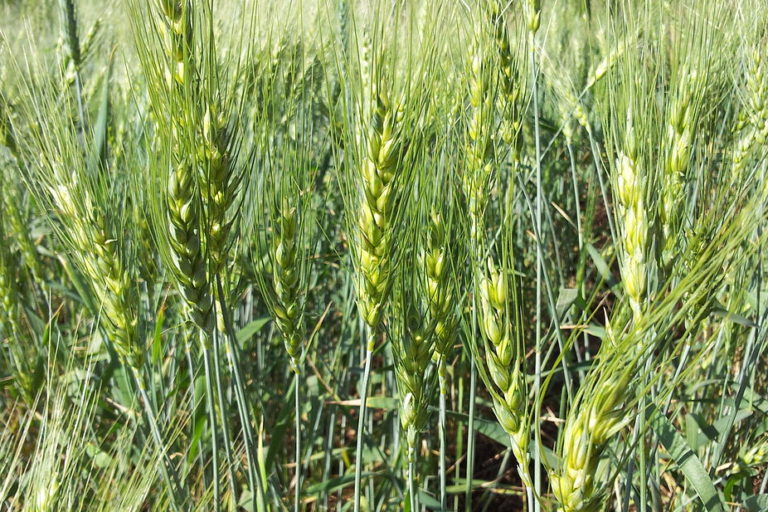- The Intergovernmental Panel on Climate Change has recently come out with its first-ever comprehensive report that looks at the whole land-climate system. It emphasised that land is already under growing human pressure and climate change is adding to these pressures.
- The report discussed that better land management practice can help in tackling climate change. It also stressed on protecting land to ensure global food security even as the population increases and the negative impacts of climate change on vegetation increases.
- The report that comes ahead of the 14th session of the Conference of Parties (COP 14) of the United Nations Convention to Combat Desertification (UNCCD) in Delhi later this year also discussed ways of managing desertification and land degradation across the world.
Asserting that the range and intensity of desertification have increased in some dryland areas over the past several decades, a latest report by the Intergovernmental Panel on Climate Change (IPCC) has suggested afforestation programmes like “green walls” and “green dams” to combat desertification.
“Afforestation programmes aimed at creating windbreaks in the form of green walls and green dams can help stabilise and reduce dust storms, avert wind erosion, and serve as carbon sinks, particularly when done with locally adapted tree species,” said the IPCC’s Special Report on Climate Change and Land (SRCCL) which was released on August 8, 2019.
It was prepared by 107 experts from 52 countries and this was the first IPCC report in which a majority of the authors (53 percent) are from developing countries. Established in 1988, IPCC is a United Nations body that provides governments across the world with regular scientific assessments concerning climate change, its implications and potential future risks, as well as to put forward adaptation and mitigation strategies.
It highlighted several green wall and green dam programmes undertaken across the world over the past several decades to tackle desertification and land degradation. For instance, it revealed that such programmes have been implemented in countries like China, Algeria, Mongolia, Turkey and Iran, and in some areas in the Sahara and the Sahel region.
Stressing that these programmes are increasingly considered as part of many national and international initiatives to combat desertification, it said that afforestation and reforestation programs can contribute to reducing sand storms and increasing carbon sinks in dryland regions.
In China, the government recognised that desertification and dust storms jeopardised livelihoods of nearly 200 million people, and thus afforestation programmes for combating desertification were initiated since 1978. The efforts resulted in encouraging results. The IPCC report noted that China’s efforts showed that the green wall and green dam projects generally played an “active role in combating desertification and fighting against dust storms in China over the past several decades”.
Studies showed that the area of degraded land decreased, carbon sequestration increased, the amount of wind erosion decreased, the average annual occurrence of sandstorms decreased and that the restoration of degraded land led to an increase in the annual output of fresh and dried fruits, the report said.
Desertification is land degradation in arid, semi-arid, and dry sub-humid areas, collectively known as drylands, resulting from many factors, including human activities and climatic variations. The range and intensity of desertification have increased in some dryland areas over the past several decades. It is estimated that about 500 million people live in areas that face desertification and as per IPCC report the highest numbers of people affected are in south Asia (which includes countries like India), East Asia, North Africa and the Middle East.
“Desertification has already reduced agricultural productivity and incomes and contributed to the loss of biodiversity in some dryland regions. In many dryland areas, the spread of invasive plants has led to losses in ecosystem services, while over-extraction is leading to groundwater depletion. Unsustainable land management, particularly when coupled with droughts, has contributed to higher dust storm activity, reducing human well being in drylands and beyond,” the report said.

It revealed that dust storms were associated with “global cardiopulmonary mortality of about 402,000 people in a single year” and higher intensity of sand storms and sand dune movements are further causing disruption and damage to transportation as well as solar and wind energy harvesting infrastructures.
Read more: Is India doing enough to battle desertification?
[Interview] “Avoiding the risk of land degradation is fundamental to any response to climate change”
“The choices we make about sustainable land management can help reduce and in some cases reverse these adverse impacts. In a future with more intensive rainfall the risk of soil erosion on croplands increases, and sustainable land management is a way to protect communities from the detrimental impacts of this soil erosion and landslides. However there are limits to what can be done, so in other cases degradation might be irreversible,” said Kiyoto Tanabe, co-chair of IPCC’s task force on national greenhouse gas inventories, in a statement.
The report is significant as it sets the agenda for the upcoming international environment and climate meetings. In September, India is hosting the 14th session of the Conference of Parties (COP 14) that are a signatory to the United Nations Convention to Combat Desertification (UNCCD) and then later in December there is a meeting of UN Framework Convention on Climate Change Conference (COP25) in Chile.
Global food security could be affected
Climate change is already affecting food security through increasing temperatures, changing precipitation patterns, and greater frequency of some extreme events and it will continue with “projected future climate change”.
The report stressed that increasing temperatures are affecting agricultural productivity in higher latitudes, raising yields of some crops (maize, cotton, wheat, sugar beets), while yields of others (maize, wheat, barley) are declining in lower-latitude regions.
“Warming compounded by drying has caused yield declines in parts of southern Europe. Based on indigenous and local knowledge, climate change is affecting food security in drylands, particularly those in Africa, and high mountain regions of Asia and South America,” the report said.
It highlighted that climate change is affecting all four pillars of food security – availability (yield and production), access (prices and ability to obtain food), utilisation (nutrition and cooking), and stability (disruptions to availability). It recorded that about one-third of food produced across the world is lost or wasted but reducing this loss and waste would reduce greenhouse gas emissions and improve food security.
“Food security will be increasingly affected by future climate change through yield declines – especially in the tropics – increased prices, reduced nutrient quality, and supply chain disruptions. We will see different effects in different countries, but there will be more drastic impacts on low-income countries in Africa, Asia, Latin America and the Caribbean,” said Priyadarshi Shukla, who is the co-chair of IPCC’s Working Group III, in a statement.

The report also highlighted that water scarcity in dry regions will become an increasingly urgent challenge beyond a global temperature increase of 1.5 degree Celsius.
It said that climate change can amplify environmentally induced migration both within countries and across borders and added that “extreme weather and climate or slow-onset events may lead to increased displacement, disrupted food chains, threatened livelihoods, and contribute to exacerbated stresses for conflict.”
In 2015, at the Paris Climate Agreement, the world agreed to make efforts to hold the increase in the global average temperature to well below two degree Celsius above pre-industrial levels and to try its best to limit the increase to 1.5 degree Celsius.
Indigenous communities can play a key role in land management
According to IPCC’s report, indigenous and local knowledge (ILK) can play a key role in understanding climate processes and impacts, adaptation to climate change, sustainable land management across different ecosystems, and enhancement of food security.
It stressed that sustainable land management, including sustainable forest management, can prevent and reduce land degradation, maintain land productivity, and sometimes reverse the adverse impacts of climate change on land degradation.
Experts said IPCC report reiterates what the communities in India have been saying.
Environmentalist Madhu Sarin pointed out that the report also highlights the importance of recognising the rights of communities over the land and natural resources.
“The IPCC report is talking about the importance of recognising rights of communities which empowers them to manage land and conserve biodiversity based on their indigenous knowledge. India’s Forest Rights Act 2006 provides for this by recognising community forest resource rights that shift the authority for managing community forests from the bureaucracy to communities,” Sarin told Mongabay-India.
However, Sarin stated that the sad part is that despite all that Indian government is dragging its feet as far as implementation of FRA 2006 is concerned. “In fact, the draft amendments to the Indian Forest Act don’t even talk about the role of community in managing forests … it empowers forest officials to take away rights recognised under the FRA implying that only they have knowledge about sustainable forest management which is increasingly accepted as a myth,” said Sarin.
Read more: With forest rights in focus ahead of elections, proposed changes to Forest Act draw attention
Banner Image: Green walls can help stabilise and reduce dust storms. Photo by Mayank Aggarwal/Mongabay.
